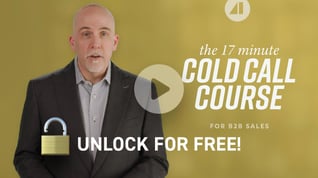Several companies with revenues measured in billions confessed that the size of their company makes it easy for their salespeople to acquire a first meeting, however, many of them struggle to ensure sales progress, as they cannot get a second meeting.
While many sales leaders want to believe B2B buying and selling has changed little in the 21st century, the truth is that they have evolved and continue to change over time. Like fish that don’t know what water is, we have difficulty recognizing the evolution in our environment.
Understanding modern sales meeting etiquette is crucial to adapting to these changes.
A salesperson who can acquire a first meeting needs to perform well enough to book a second meeting. A first meeting is not evidence of an opportunity; a second meeting is.
See: 10 Obligations You are Responsible for In the Sales Conversation
Why You Can’t Get a Second Meeting
Let’s agree that a first meeting is a tryout to join your prospective client’s team. There are several ways you can fail the audition, jeopardizing your ability to ensure sales. The first is by wasting your prospect’s time, which is a decision maker’s most valuable asset and something they never have enough of.
The second way to fail your audition is to be One-Down, meaning you don’t know more than your contact regarding the decision they are facing. When you create little to no value for your client in the sales conversation, there is no reason for buyers and decision-makers to grant you more time.
Unfortunately, most sales organizations still use a legacy approach to sales. When your company insists you use this approach, you will struggle to get a second meeting. You also increase the number of contacts that ghost you.
Five Rules to Ensure a Second Meeting
You can find more on the One-Up approach in Elite Sales Strategies: A Guide to Being One-Up, Creating Value, and Becoming Truly Consultative. There are five rules that will prevent you from ruining your first meeting, and I encourage all salespeople to develop an executive briefing and talking points keeping them in mind. Those who find this exercise to be difficult will need to update their sales methodologies and approach.
Rule 1: You may not mention the name of your company or what your company does.
Since you’ve booked a first meeting, your future client already knows the name of your company. You told your contact the name of your company when you first spoke to them, and your calendar invite also included it. That’s enough. You scheduled this meeting to help your client improve their results in some meaningful way. The company they are interested in is their own.
Following this rule eliminates the possibility of wasting your contact’s time in the first meeting. Sharing something that is on your website is a waste of time. Removing this crutch builds your credibility and gives you enough time to create value for your prospective client.
Rule 2: You must not mention any of your clients or your results.
Your contact has seen many slides with logos of large companies. As impressive as your list is, your contact might not be impressed. You might find that unbelievable, but pause here and ask yourself how many times a contact has blurted out something like, “Wow! What a great list of clients!” Discussing your other clients’ results is premature, and it wastes the little time you have to create value.
Most of your contacts are not trying to assess your company’s success. They are trying to pursue a conversation that will help them produce the results they need. When you focus on other clients, you prevent the conversation your contact needs from you.
Rule 3: You are prohibited from mentioning your products or services.
One way you ruin your chances of gaining a second meeting is by talking about your products, services, or solutions. There is no need to start building the value of your solution in a first meeting. Your first meeting should provide your client with information and insights that will help them better understand the root cause of their problem and how best to improve their results.
When you talk about your solution in the first meeting, your client feels they are being pitched way too early. This wastes time and fails to create value, and your contact will bar you from a second meeting.
Rule 4: You are not allowed to create rapport.
If you are an extrovert, this can be difficult. Unless you believe your client is lonely and in need of a friend, avoid wasting time in the first meeting. Busy people often find that rapport-building wastes their time, especially when a salesperson fails to be helpful in the first meeting.
This is not to say you shouldn’t build rapport and a strong relationship, but it’s best to pursue this at the end of the conversation, after you have helped the client with the information they need. You are unlikely to develop the relationship you want without creating value.
Rule 5: You cannot ask questions to elicit the client’s dissatisfaction, problem, pain point, or hot button.
This is a tough rule, but remember this: Your company solves a small number of problems. It would be odd for you not to know what kind of problems your clients have and what results they need to improve. When you ask about the client’s problems and how they affect their results, it looks like you know nothing.
No decision-maker needs a salesperson who must ask questions they should already know how to answer. Either you are an expert and an authority, or you are a peddler.
Five Rules to Ensure a Second Meeting
By removing these common mistakes, you make room for a conversation that creates value for your contact and their stakeholders. Instead of reciting the information on your website, which your client can easily find, use your contact’s time effectively.
If this seems difficult, know that your client finds the legacy approach to be a frustrating waste of time. It also wastes your time. In a first meeting, you must prove you deserve a second meeting. These rules help you do that.
The only way to secure a second meeting is to create value in the first. Those who are truly consultative can provide a value-creating sales experience using none of these legacy crutches. Go here for more help.












Comments